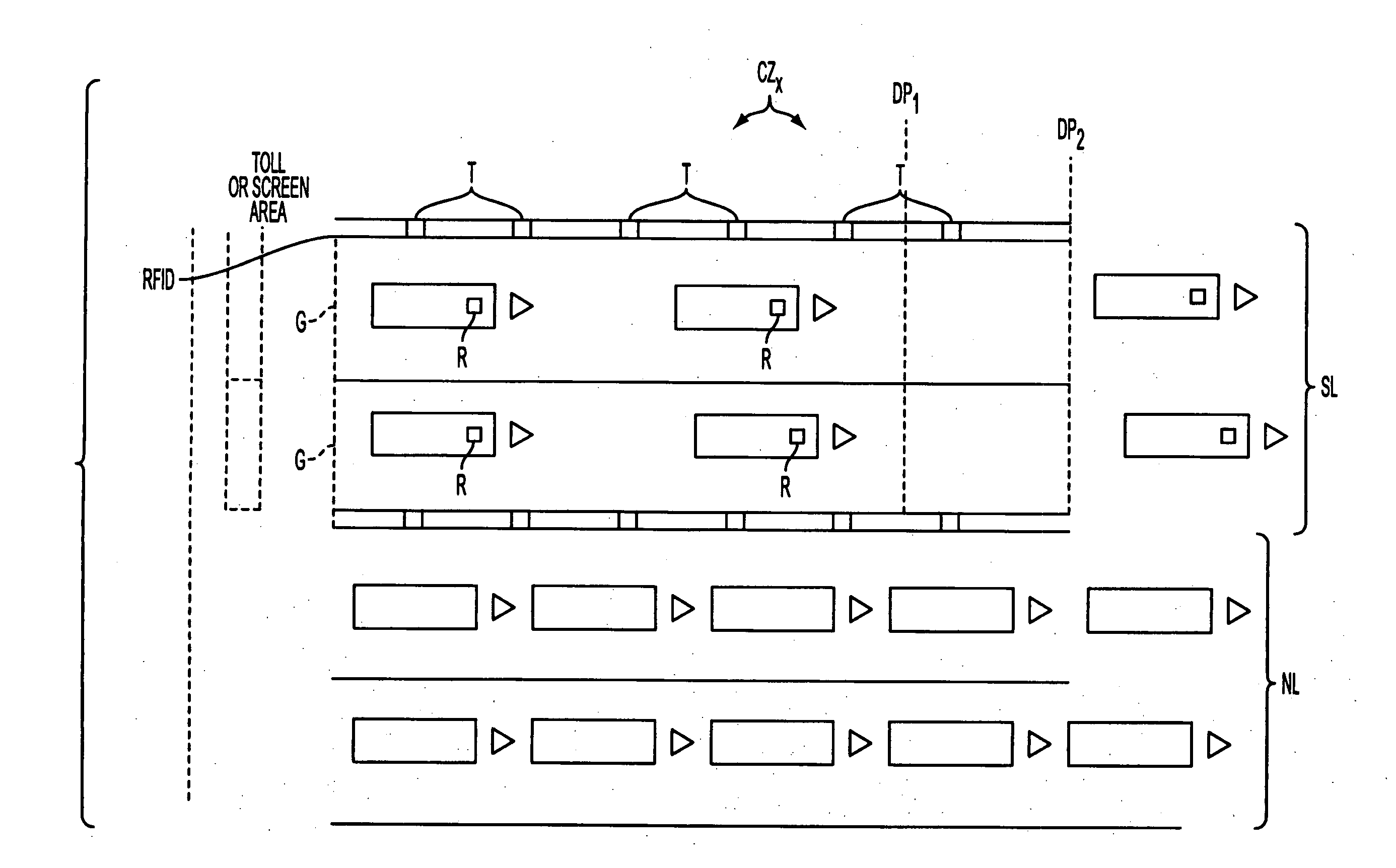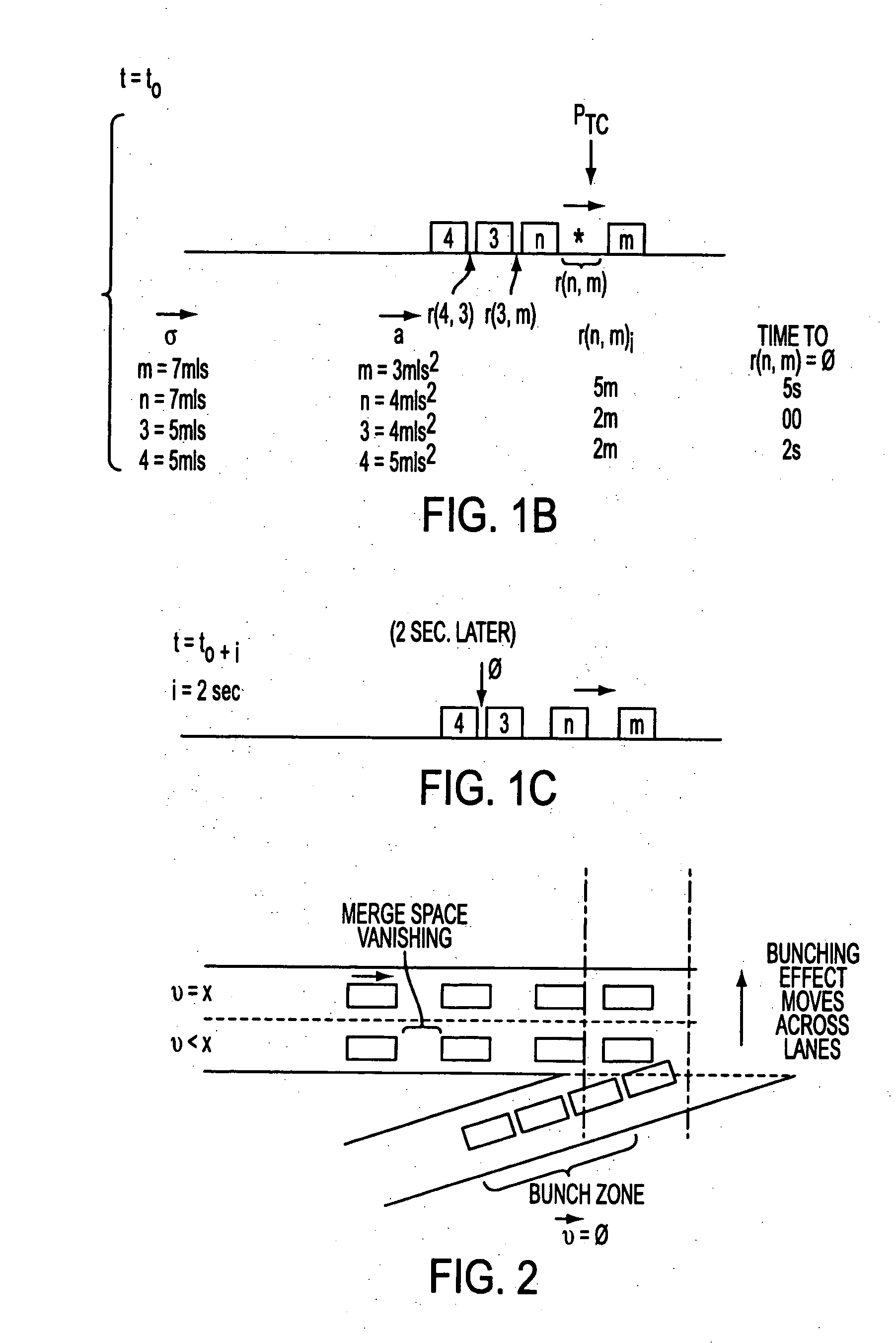Externally activated non-negative acceleration system
a non-negative acceleration and external activation technology, applied in brake systems, process and machine control, instruments, etc., can solve problems such as unnecessary slowing and congestion problems, and achieve the effects of preventing gridlock dissipation, minimizing impact, and reducing traffic congestion
- Summary
- Abstract
- Description
- Claims
- Application Information
AI Technical Summary
Benefits of technology
Problems solved by technology
Method used
Image
Examples
Embodiment Construction
[0036] Various aspects of vehicular control, RF transmission, and traffic control are taught in specific patents which are incorporated herein by reference. These include U.S. Pat. Nos. 4,449,114, 4,403,208, 4,356,489 for RF aspects of vehicle sensing. Other background technology incorporated herein for teaches various aspects of the components of the invention include: U.S. Pat. No. 6,356,833 to Joen teaches a the RF control of a vehicle in a particular driving state. See Also. WIPO Pat. Publication 2000-11629 to Olsson teaches reducing traffic through route control (See also U.S. Pat. No. 6,427,114). WIPO Pat. Publication 1998-35276 to Douglas teaches a navigating system using RF transmission to vehicles in a workplace. U.S. Pat. No. 5,289,183 to Hassett et. al. teaches a plurality of read write transponders in roadway sensors that collect information about specific vehicles.
[0037] The following references provide other background to the present invention: U.S. Pat. Pubs. 2003-00...
PUM
 Login to View More
Login to View More Abstract
Description
Claims
Application Information
 Login to View More
Login to View More - R&D
- Intellectual Property
- Life Sciences
- Materials
- Tech Scout
- Unparalleled Data Quality
- Higher Quality Content
- 60% Fewer Hallucinations
Browse by: Latest US Patents, China's latest patents, Technical Efficacy Thesaurus, Application Domain, Technology Topic, Popular Technical Reports.
© 2025 PatSnap. All rights reserved.Legal|Privacy policy|Modern Slavery Act Transparency Statement|Sitemap|About US| Contact US: help@patsnap.com



